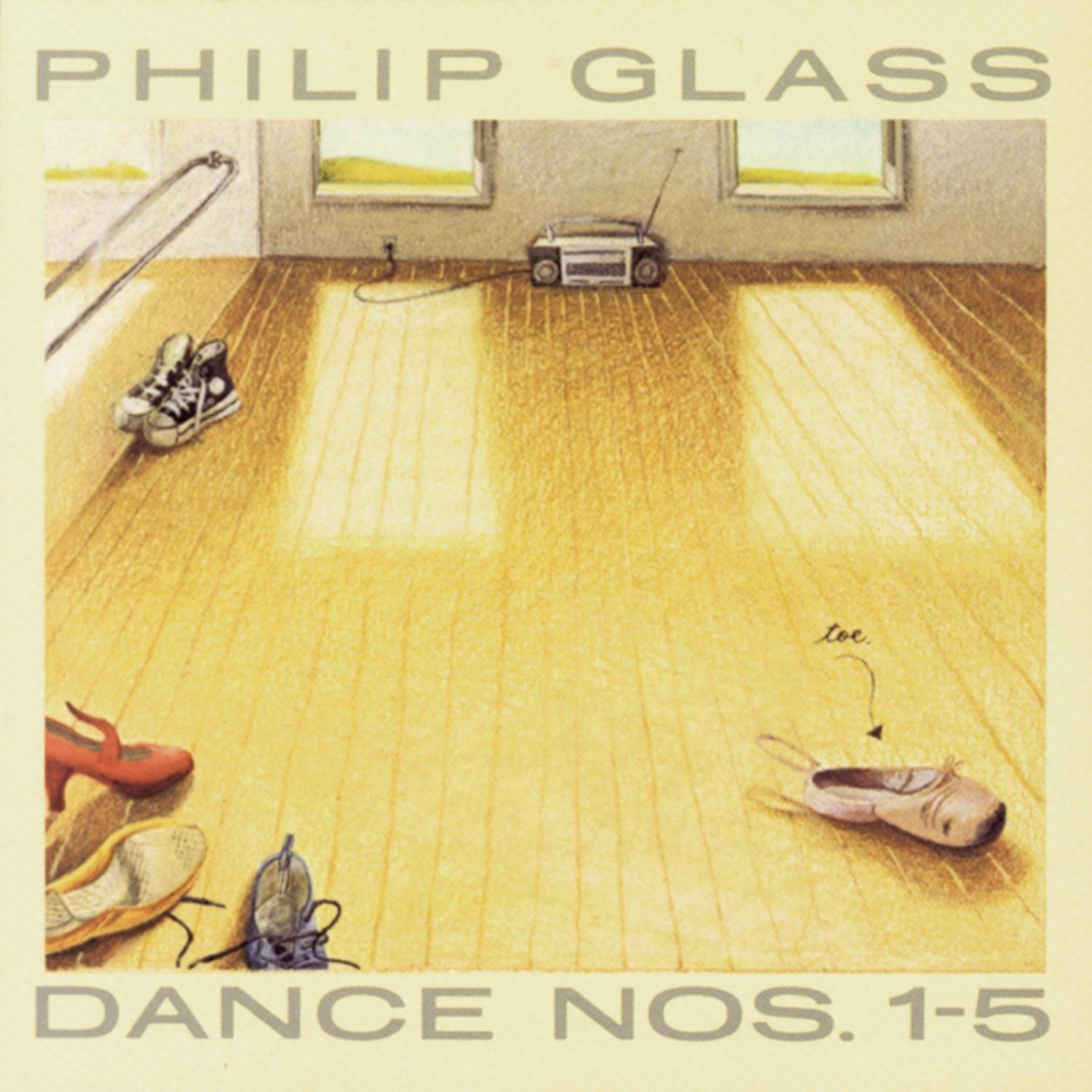
Info
The Philip Glass Ensemble
Michael Riesman, Conductor
Catalog
Tracks
1. Dance No. 1 19:20
2. Dance No. 2 22:58
DISC TWO
1. Dance No. 3 18:35
2. Dance No. 4 23:31
3. Dance No. 5 20:15
Notes
The music on this album was originally conceived as a three-way collaboration between composer Philip Glass, choreographer Lucinda Childs and artist Sol LeWitt. Dance received its world premiere in Amsterdam on October 19, 1979 and its New York premiere at the Brooklyn Academy of Music on November 29, 1979.
By now the many admirers of Philip Glass’s music must be well aware of this remarkably successful composer’s rise from relatively narrow avant-garde origins to worldwide popularity. His style of composition — in which brief, repeated, rhythmically precise phrases undergo subtle shifts over time, giving the music qualities of both hyperactivity and hypnotic motionlessness— today reaches thousands.
Post-dating Einstein on the Beach — Glass’s 1975-76 collaboration with director Robert Wilson— Dance was another Glass collaboration, this time with choreographer Lucinda Childs, known for her austere, mathematically exact dances, and artist Sol LeWitt, who provided a ghostly, gigantic black-and-white film for several of the piece’s five sections.
Dance has an abstract purity that easily earned it the label “minimalist,” a term that Glass himself disavows but that seems appropriate, at least in this case. After Dance, Glass’s music took several turns, not so much in style as in the various new contexts in which it was presented: major opera commissions and film scores led him to write for forces other than those of the Philip Glass Ensemble. At the same time, an attempt to reach a wide audience resulted in some shorter, perhaps more accessible, narrative pieces. Dance marked the blossoming of the composer’s experimental work, advancing the rhythmic and harmonic complexities first applied in the later sections of his mid-1970s Music in Twelve Parts, as well as those in the danced sections of Einstein on the Beach. Here, though, the music — particularly Dance Nos. 1,3 and 5, all written for the Ensemble— has an unforgettable exuberance that somehow speaks all at once of joyful innocence, intense erotic desire, tenderness, regret and, finally, acceptance. True, these emotions had surfaced in much of Glass’s post-1965 music, but never so evocatively as here. Dance, is music of instant, powerful allure, and if Dance Nos. 1 and 3 distantly echo familiar types of music (the waltz, carousel tunes, children’s songs). Dance No. 5 is of a startling, bracing originality, music of pure ascent and, I would not hesitate to add, rare genius.
On the other hand, Dance Nos. 2 and 4 exemplify what Glass had mentioned in interviews shortly after the international success of Einstein on the Beach: that is, composing several large-scale works for solo organ; for instance, Dance No. 2 originated as a 1978 work entitled Fourth Series Part Two. This piece, later incorporated into Dance, and Dance No. 4 as well, have a more subdued, more darkly romantic quality than the work’s other sections and are quite unlike anything Glass had previously written. Still, they too, with their mysterious tilts of time and key signatures, continue the exploration of polyrhythms and harmonic complexities within the context of Glass’s repetitive, “minimalist” style.
But maybe this is all making Dance sound serious and difficult, which it isn’t — a fact that will surely be dear to you from the moment you hear its first, jubilantly rippling notes up until the clarion calls of its visionary conclusion.
— Richard Horn
Credits
Dance No. 1 performed by: Philip Glass, Farfisa Organ · Michael Riesman, Keyboards · Iris Hiskey, Voice · Jon Gibson, Flute · Jack Kripl, Flute & Piccolo · Richard Peck, Flute.
Dance No. 2 performed by: Michael Riesman, Organ.
Dance No. 3 performed by: Philip Glass, Farfisa Organ · Michael Riesman, Keyboards · Iris Hiskey, Voice · John Gibson, Soprano Sax · Jack Kripl, Soprano Sax · Richard Peck, Alto Sax.
Dance No. 4 performed by: Philip Glass, Organ.
Dance No. 5 performed by: Michael Riesman, Keyboards · Dora Ohrenstein, Voice · Jack Kripl, Flute · Jon Gibson, Soprano Sax · Richard Peck, Tenor Sax.
Dances Nos. 1 & 3 : Recorded at Greene St. Recording Studios, New York, 1979/ Engineer: Kurt Munkacsi and Roddy Hui/ Assistant Engineer: Lisa Zimits/ Digitally remixed at The Living Room, Inc., New York. 1986; Engineer: Don Christensen.
Dances Nos. 2 & 4: Recorded and digitally mixed at The Living Room, Inc., New York, 1985/ Engineer: Don Christensen. Dance No. 5: Recorded and digitally mixed at Greene St. Recording Studio, New York. 1984/ Engineer: Kurt Munkacsi.
Cover design & art: Candy Jernigan.
Music published by Dunvagen Music Publishers, Inc. © 1980, 1988 Sony Music Entertainment Inc.
Buy
Related
Dance Nos. 1-5
